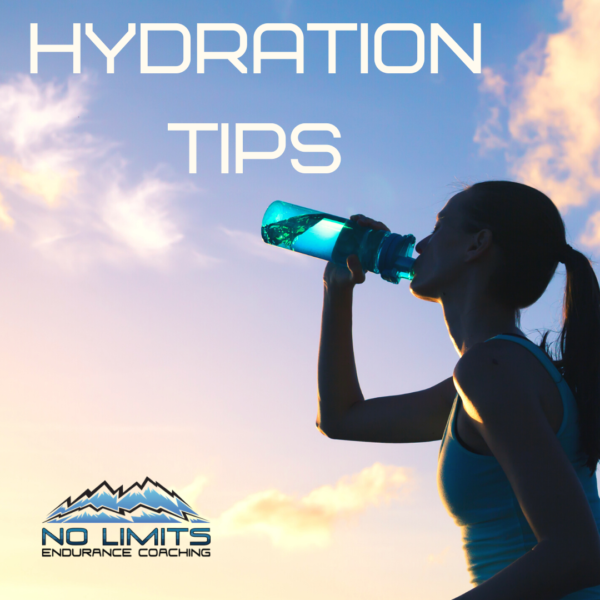by Coach Lindsay Leigh
When summer turns up the heat and humidity, it’s hard to keep up with our hydration needs, especially when we train hard.

I often field comments from athletes saying they didn’t hydrate enough during the workout or started a workout dehydrated because of not drinking enough through the day. Both of these situations are in our control. This post offers some tips to help you dominate this controllable aspect of training!
How much you should drink depends on a number of factors including your body size, sweat rate, temperature/humidity and your activity level, so instead of aiming for a certain amount each day, drink enough so that your urine is light yellow.
You can make water more appealing by adding fruit to it or a splash of cranberry juice or having sparkling water. Eating fruit like watermelon, or other water-dense foods can also help you stay hydrated.
Dehydration
Dehydration can mask itself as hunger, and also trigger sugar cravings. When you exercise in a dehydrated state, you use glycogen (stored carbohydrate) more quickly, causing you to crave sugar afterwards to replenish the glycogen. So, try drinking a big glass of water first when you’re craving sweets.
Dehydration can also make you tired, irritable, and cause headaches. It causes headaches in a couple different ways. Dehydration affects serotonin levels, which can trigger headaches. And, blood vessels in the brain respond quickly to hydration levels which can lead to dull headaches or cause full blown migraines.
When you’re low in water, blood circulation slows down, which can cause muscle cramps. The body will protect vital organs first, so it shifts fluid away from muscles and anything else not vital. Changes in sodium and potassium through sweat loss may also contribute to cramping.
Getting Fluids During Training
Always carry fluids with you during workouts so you can hydrate full, no matter how short the workout is. Hydration belts and vests have come a long way and are pretty comfy, making carrying fluids easy. We are fans of Orange Mud vests (adventure pack in the image below – great for ultrarunning, fastpacking and hiking).

And always have water or sports drink on the pool deck during your swims – you are absolutely losing water during your swim workout and will be stronger and recover better if you take in water during it.
On workouts longer than an hour or hot workouts, be sure to have electrolytes in addition to your water.
I recommend conducting sweat assessments in varying temperatures and humidity to see how much fluid you’re losing on the bike and run. Weigh yourself before a steady hour run or bike and immediately afterward, recording how much water you took in and then calculating your fluid loss.
Need help with your daily nutrition and hydration needs? Consider our Nutrition Coaching, with a 10-week program to help you dial in your needs to optimal performance and health.
